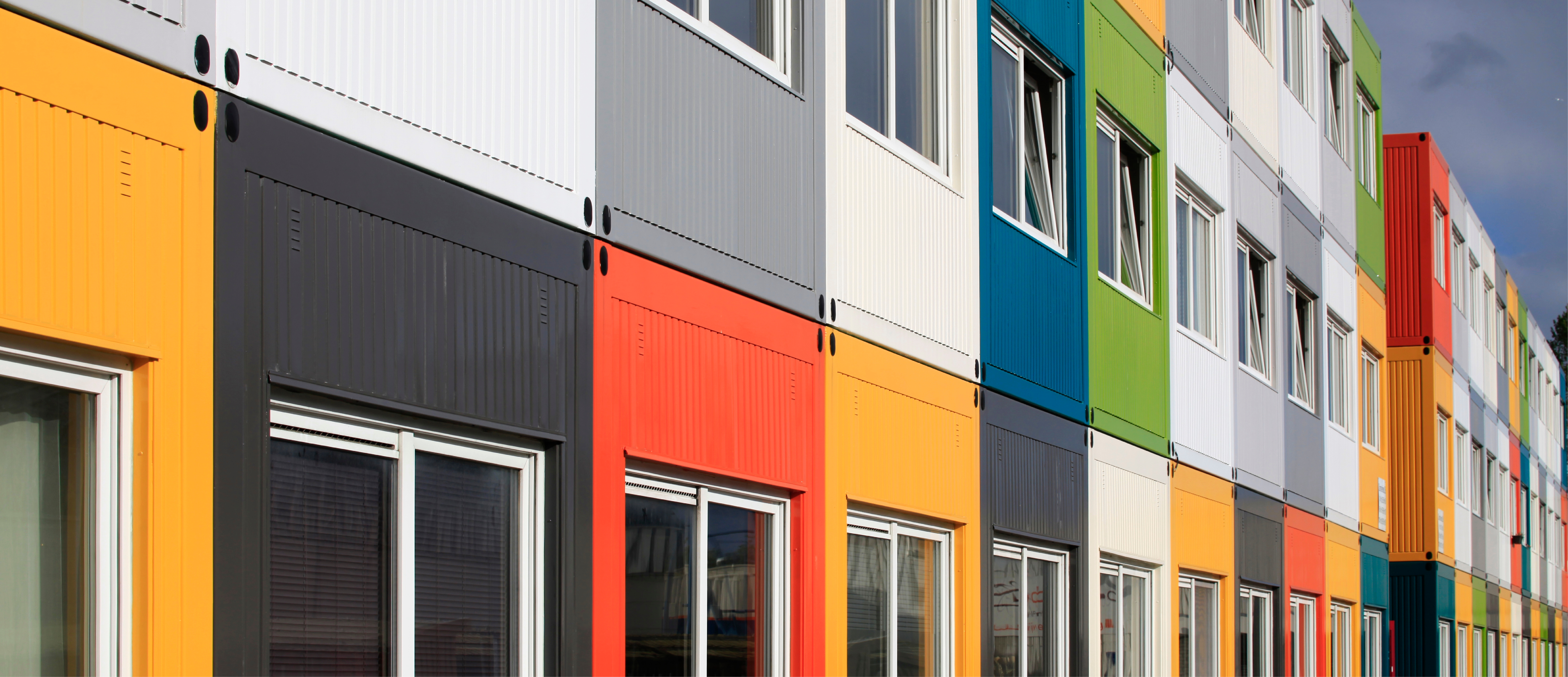Modular construction has become a hot topic in the current insurance market, with a growing number of construction companies turning to this method of construction due to its many benefits.
Unlike traditional construction practices, modular buildings are assembled in controlled environments, with the majority of the build process sheltered from the elements. This generally means a higher standard of build quality compared to traditional methods. Further to this, operatives are able to work in a controlled environment using repetitive techniques on larger equipment – which eliminates error from the construction process and improves quality and consistency.
This, along with the removal of the ‘weather factor’ means that modular construction usually results in much faster build times, which can translate into significant cost savings due to reduced labour costs. Lastly, modular construction brings with it environmental benefits as a manufacturing facility and production line is a more energy efficient environment than a construction site.
Although there are obvious benefits to utilising modular construction, insurers have a growing number of concerns around certain aspects of this building method. By providing insurers with the right level of information for their consideration when obtaining quotations for the development, these can be effectively mitigated.
Key insurer concerns
Fire safety:- Following the tragic fire at Grenfell Tower, insurers initially focused their attention specifically on ACM cladding panels and the fire rating of the composite insulation used within. In recent years, this concern has been expanded more broadly into ‘fire safety’ in general, with insurers wanting to understand the types of insulation used within the modular units and the respective fire rating when they are considering the risk.
Breaking out defective parts:- In the event of a claim, accessing the defect can often be difficult in modular units. For example, if there was an escape of water within a bathroom pod, the defective pipe work is likely to be encased within the pre-fabricated unit, making accessing the pipework in question a potentially costly exercise that could affect the integrity of the unit itself. The worst case scenario would be that the whole unit needs to be replaced rather than just the defective part. However, even the removing of just the pod itself is also likely to be challenging and costly depending on the stage of the build.
Common defects:- There have been cases where a defect within a modular unit is the cause of a manufacturing fault, with the same defect then being found in other modular units on the same manufacturing run. The concern for insurers here is the potential for repeat claims from a common cause on the same development. Understanding the identity of the contractor undertaking the pre-fabrication of the modular units and their experience within the sector will aide insurers when considering this risk.
Timeframes for replacement units:- One of the primary driving factors for using modular units is the reduction in time taken to complete the construction programme. However, with the modular units often being pre-fabricated for the specific build requirements of each individual project, insurers will want to understand what the likely lead in time would be to get replacement units manufactured and delivered to the site should one or more of the modular units be damaged, or if a defect is discovered during the course of the project. This is especially pertinent when the pre-fabrication is undertaken overseas, meaning that delivery times may be elongated. This is a particular consideration when insurers are looking at providing quotations when sourcing Loss of Revenue/Delay in Start Up (DSU) cover, as the length of any delay in obtaining replacement units would impact on the overall claim costs involved.
Due to the specific risks associated with modular/volumetric construction, it is key to ensure that insurance cover is bespoke, as many standard insurance policies will not cover these associated risks.
Some of the nuances that should be considered and covered are items such as off-site production and storage, transit risk, access/break-out cover, repetitive loss risk, as well as the more complicated area of latent defects.
Lockton has extensive experience in arranging insurance for the world’s largest modular buildings, and is uniquely placed to offer expert advice on these risks, ensuring these are covered to the fullest extent possible.

